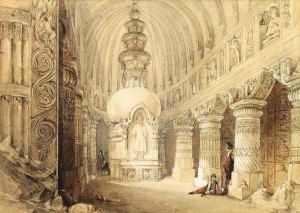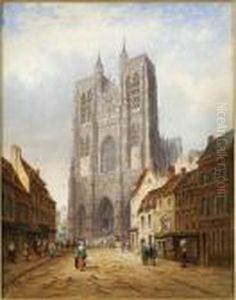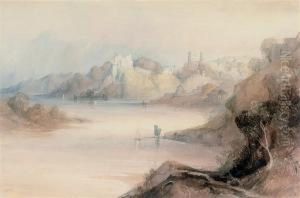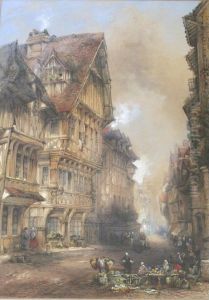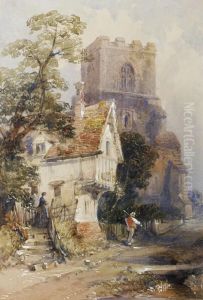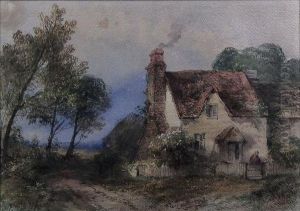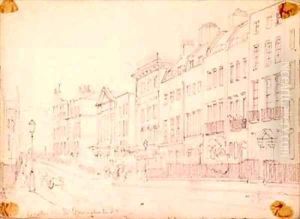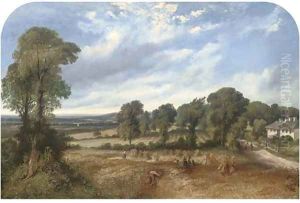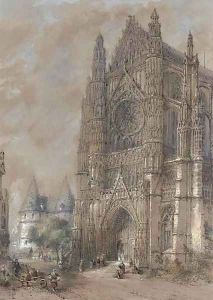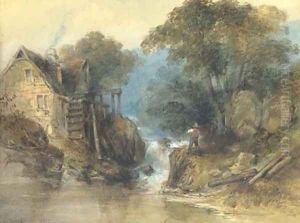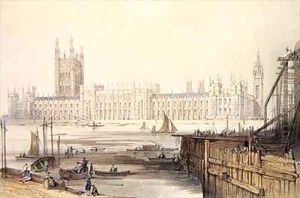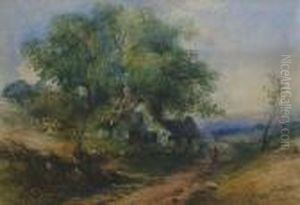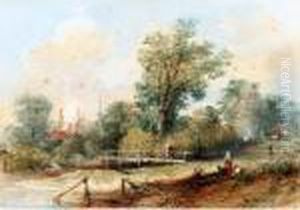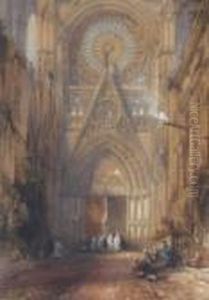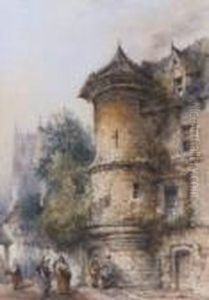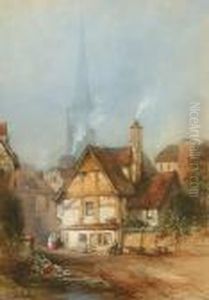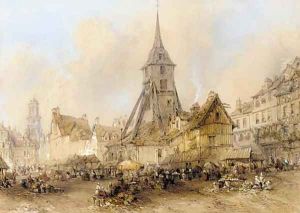Thomas Colman Dibdin Paintings
Thomas Colman Dibdin was a 19th-century English watercolor artist and painter born on December 25, 1810, in London, England. He was the grandson of the famed composer Thomas Augustine Arne and the son of Charles Dibdin the Younger, who was a well-known songwriter and theatre proprietor. Dibdin's artistic talent became evident at an early age, and his family background in the creative arts provided a nurturing environment for his budding skills.
Dibdin initially pursued a career in the Royal Navy but eventually focused on painting, particularly watercolors, which became his preferred medium. He was known for his landscapes and marine scenes, often characterized by their luminosity and meticulous detail. His works often depicted English and European scenery, capturing both the romantic allure and the accurate topographical details of the locations.
Throughout his career, Dibdin exhibited his works at various prestigious institutions, including the Royal Academy of Arts and the Society of British Artists. He was also a member of the New Watercolour Society, an indication of his standing within the artistic community of his time.
Despite being a prolific artist, Dibdin faced financial difficulties later in life, a struggle that many artists of the era encountered. Nevertheless, his paintings continued to receive recognition and found patrons who appreciated his unique style and contribution to the watercolor medium.
Thomas Colman Dibdin's artistic legacy is a testament to the vibrant British watercolor tradition of the 19th century. His works are part of collections in several art galleries and continue to be studied and admired for their beauty and historical value. Dibdin passed away on December 28, 1893, leaving behind a rich portfolio of art that continues to enchant art lovers and collectors around the world.

